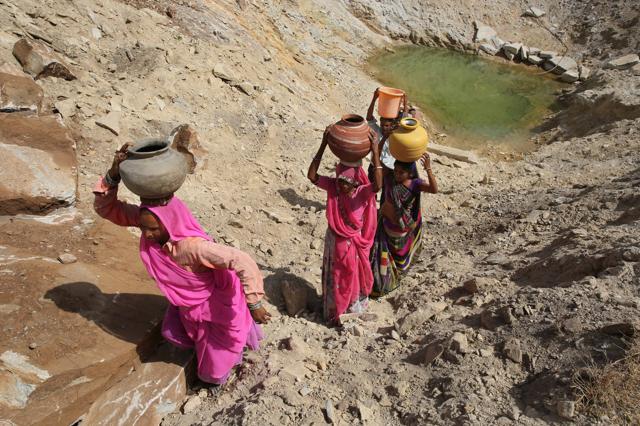How an arid Rajasthan village turned into a desert oasis
In Piplantri, a village in Rajasthan’s Rajsamand district, around 1,800 check dams that have been constructed on the pasture lands over the mountains in the last 11 years to recharge the groundwater level.
It’s 2 pm, but the fiery sun does not appear to bother the motley group of people gathered in the sprawling compound of Jal Grahan Committee in Piplantri village in Rajasthan’s Rajsamand district, which has been corroded by illegal mining.

The group is here on a learning trip. These trained and newly-promoted Block Development Officers (BDOs) are among the many government officials who are here to learn from the Piplantri model of rainwater harvesting.
Over a span of 11 years, this village among the Aravalli ranges has become an ‘‘adarsh gaon’ (ideal village), which has survived Rajasthan’s severe drought and water scarcity.
“Around 1,800 check dams that have been constructed on the pasture lands over the mountains in the last 11 years to recharge the groundwater level. Now, there are countless puddles in the ranges, which is an unlikely sight in Rajasthan,” says Shyam Sundar Paliwal, former sarpanch and president of Jal Grahan Committe, which turned the barren Rajsamand into an oasis.
The effective utilisation of government schemes has played a big role . “All the check dams and trenches have been constructed by villagers working under different programmes, such as the MNREGA (Mahatma Gandhi National Rural Employment Guarantee Act ) and the Integrated Watershed Management Programme,” said Paliwal.
In a bid to promote tree planting, Piplantri has started a unique custom of planting 111 trees for every girl child born in the village. “Over the past few years, we have planted thousands of strees and this custom has also spread to a few other villages,” said Paliwal.
The BDOs are visiting the village to take a leaf from the Piplantri model of rainwater harvesting. “With drought being a serious problem in Rajasthan, I am determined to use similar rainwater harvesting techniques in the area where I will be posted. Combining schemes such as Jal Swavlamban Yojana and building check dams and trenches to store rainwater, the adverse effects of drought can be minimised,” said Bhagirath Meena, one of the visiting BDOs.
Women were at the forefront in building the rainwater harvesting facilities, with their participation the highest in the village under the MNREGA scheme.“Constructing the check dams and planting trees in the almost barren land was not easy. Eleven years ago, the scenario was contrastingly different from today and we used to face very acute water shortage,” said Kala Devi, who was among the people instrumental in overseeing work under the MNREGA project in Piplantri.
Mining waste dumped around Piplantri is negating some of the gains. “We couldn’t stop the mining companies from dumping the waste, so we planted 200 trees near the dumping places to mark the area in the hope that it will stop the mining companies,” said Ranglal Mehta, another member of the Jal Grahan Committee.
The villagers have built 12 water tanks with a capacity of 30,000 to 3.5 lakh litres in the mountains, which now provide direct tap water to over 8,000 residents. Groundwater is pumped up using innovations such as a roundabout-cum-water pump in the school playground that pumps up water when children take a spin.
“We have selected 46 other villages where the Piplantri model will be adopted and work has already started to construct check dams and trenches in some places, like in the neighbouring village Tasaul. The focus is to develop rainwater harvesting facilities in Rajsamand,” said Archana Singh, the district collector. A research centre is also being developed at the village for environmentalists to study the Piplantri model and its influence on the ecosystem.
.





